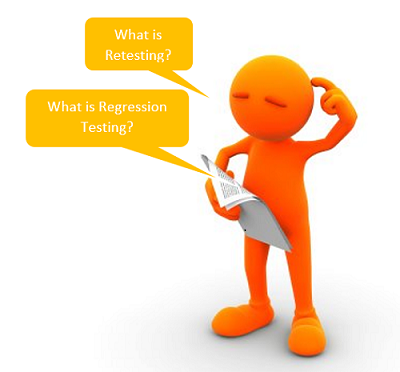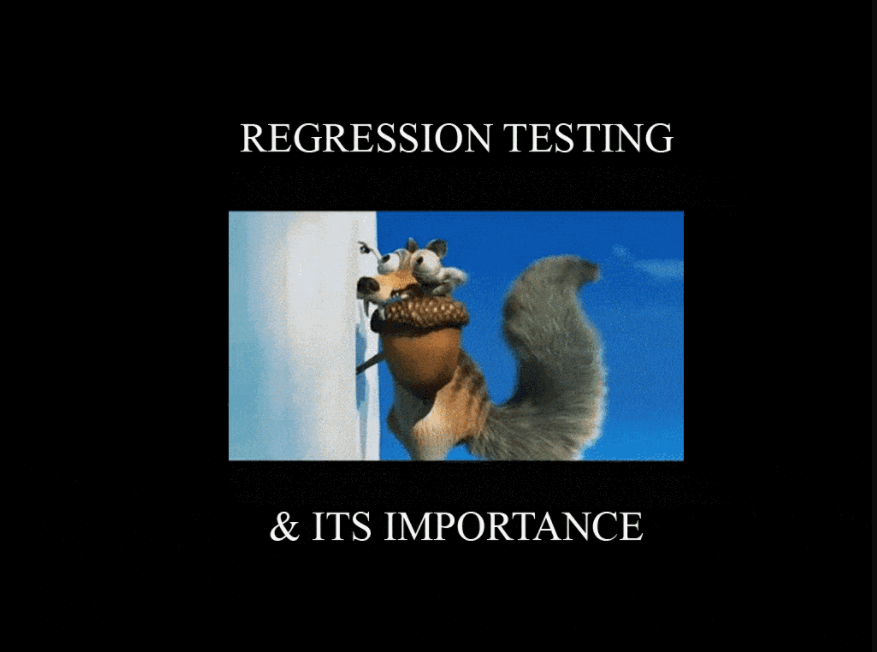Accelerate Success with AI-Powered Test Automation – Smarter, Faster, Flawless
Start free trialIf you are a fan of the Ice Age animated movie series, you might recognize this scene. In this scene, Scrat (the squirrel) is holding on to an acorn and trying to close one of the leaks from the iceberg. But that results in another leaking point elsewhere and when he tries to cover that leak, it results in another one with a cascading effect. Similarly, if we draw a parallel in the world of software development, there are times when fixing one bug might result in another bug(s) unintentionally. This is further compounded by the agile team, teams creating modifications and new features and releasing them continuously, which can introduce even more bugs. Regression testing plays a crucial role in getting a stable version of the software by taking care of finding such bugs before production deployment.
What is regression testing all about?
Regression testing is a type of software testing technique where the QA team runs a set of test cases to verify that with bug fixes or with the addition of new features in the application, the previous functionalities are not hampered.
In the agile methodology of software development, there are incremental changes and the frequency of lines of code change is high. Hence, there is a high probability of new bugs getting introduced. This leads to the need for regression testing to become an integral part of the software development life cycle. Regression testing becomes even more important when the application is live and being used by the end-user and their reported issues are to be fixed on the highest priority.
After the software is made available to the end-user, especially during the beta testing phase, development teams do not have any control over the environment and the actions, that the end-users will perform while using the application. Those actions are the real-time, real-world actions as to how the application is intended to be used and this phase of testing brings in the most valuable feedback about the application. The feedback report might have bugs or errors which need to be fixed in order to achieve a version that can be released to the end-user for actual use.
Regression testing ensures the stability and quality of the release.
Let’s talk about types of Regression testing
Regression testing can be done on various scales, depending on the requirements of the application and the organizational structure. This invariably requires taking into consideration the cost and the manual efforts involved. Based on the current requirement of the project, one can go with either complete regression or partial regression.
- Complete regression involves going through the entire application or website once again to make sure that all the functional areas are working as expected and none of the current functionalities is hampered. This can either be done manually or can be automated as well. For the automation, there are various frameworks available in the market like Selenium or Capybara using which the software testers can automate their regression suite so that whenever this needs to be done before an important release, it can be done swiftly and quickly covering all the major areas of the application. This is a time-saving option when looking for complete regression. However, this requires a lot of upfront effort and almost continuous maintenance or you can use Webomates CQ.
- Partial regression is done basically when a software tester wants to analyze the effects of a bug fix to other areas of that particular part of the application. This is done by running some selective test cases from the test suite, just to make sure that the recent changes have not impacted other functional and verified areas of the code.

Have you heard about “retesting”?

You might have come across a similar term called “retesting”, which does sound like regression testing and is often confused with it but the two have many more differences than similarities.
When a bug is reported, either by the testing team or by the end-user in the production, developers fix them and it again reaches the testing team for verification as to whether that particular bug is fixed or not. Retesting just verifies the fix of reported bugs. Retesting might result in a pass test case which earlier failed due to the reported bug, but, when regression testing is performed around that particular functionality, there is a chance that the previously passed different test cases may now fail.
These vertical of failures are often experienced during software development because of code dependency. So, if other areas are dependent on a particular code fix, it might have some adverse effects on the previously working functionalities. This is where regression testing steps into the picture. A software release cannot be assumed to be ready to go to production just on the basis of retesting. Regression testing is a mandatory step in the delivery cycle of the software, which covers major impact areas of the application and makes sure that the product delivered to the end-user, has all the functionality in the working state.
How Webomates see regression testing?
Webomates has always focused on the quality of software products. Regression testing is extremely important for us to maintain the high standards of delivering a quality product. Webomates CQ is used for performing regression testing for all the domains.
Webomates CQ facilitates the following services as per the requirements:
- Full Regression – This is similar to complete regression as explained previously in this article. This testing requires just 24 hours to provide the complete analysis of the application, where all the test cases (any number like 1000, 2000 etc) are run for each module of the application. With the completion of this regression, the development team will have a triaged report of the execution along with the defect report. This regression also includes Exploratory testing, where along with test case execution, some random testing to be done, to make sure application is not breaking anywhere.
- Overnight Regression – Overnight regression is done on one particular module, which can be either a developed module or under the development module. It takes less time than full regression and can be completed within 14 hours. With this regression as well, the development team gets a detailed execution report along with the defects report.
- Smoke Tests – This test is done through Automation service to verify end to end functionality of a module. Typically done in 15 minutes, this is where you only get a Pass/Fail report of the test cases, based on which you can look for the defects.
The above services are not limited to individual use. One can definitely opt for an amalgamation of these services, depending on the requirements and thus, reaping the benefits of all the services in one go.
Request for demo today to know more about us and you will be amazed by the way things work at Webomates.
Read Next –
5 Best Practices for Continuous Testing
continuous testing tools in devops
Smoke testing vs Sanity testing
Tags: Regression Testing, Smoke testing

Leave a Reply